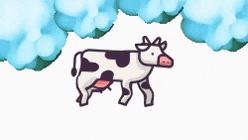In case you hadn’t heard, fires in the northwestern portion of the U.S. have been blazing for weeks. And those soaring flames are souring milk production…
The National Interagency Fire Center says more than 2.2M acres have burned in 104 large fires in 12 states.
And where there’s smoke, there’s less milk: Those fires have an impact on human health, and researchers are discovering the implications to animal health as well. University of Idaho assistant professor of animal, veterinary, and food science Amy Skibiel says it’s no cow-incidence poor air quality has an impact on milk production.
Her study on a small group of dairy cows showed they produced three pounds less milk after exposure to poor air quality for seven days.
That’s a major dip: Western dairy farms produce 40% of the nation’s milk—with California topping the charts and Idaho producing the third-largest amount of milk in the states.
Results of their study also showed higher rates of mastitis and increased risk of mortality for calves.
Udderly sad: Not only are the fires, drought, and high temperatures affecting milk production, but the poor conditions are also affecting grazing land quality and quantity.
All these factors are causing some producers to cull their herd ahead of normal schedule.
What’s next: Skibiel hopes more research within the next year will result in a better sense of the impacts smoke has on cattle. Because wildfires, unfortunately, aren’t going away anytime soon.

